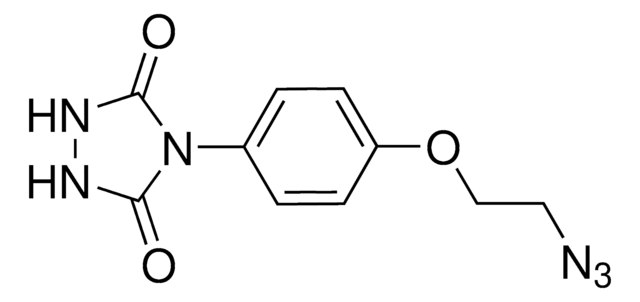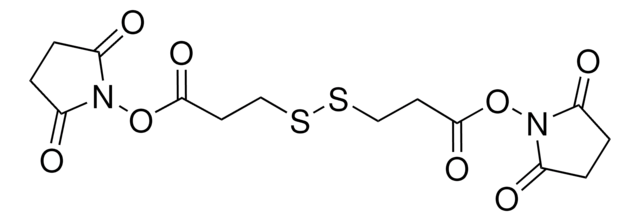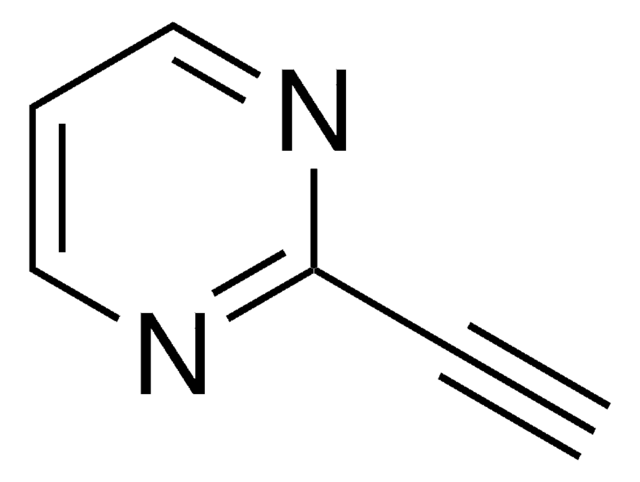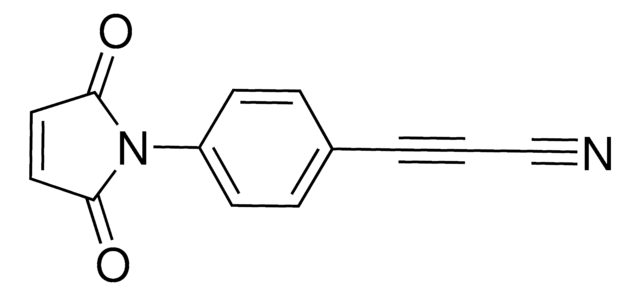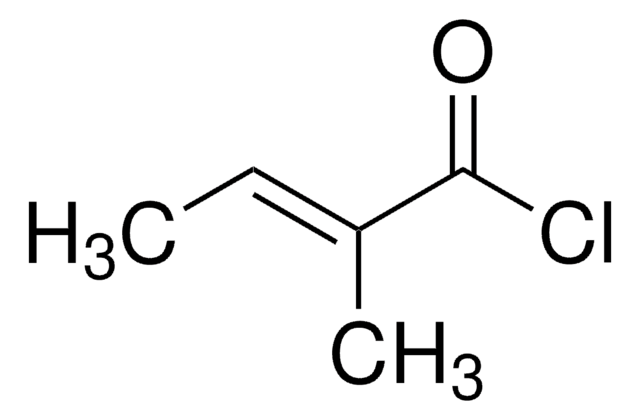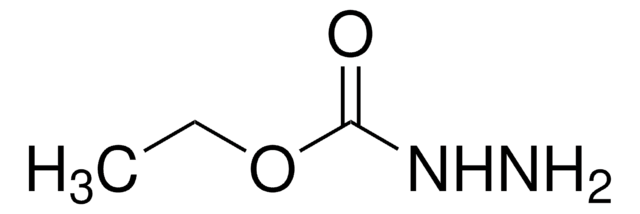806595
APN-Azide
95%
Synonym(s):
3-(4-Azidophenyl)propiolonitrile, APN-N3
Sign Into View Organizational & Contract Pricing
All Photos(1)
About This Item
Empirical Formula (Hill Notation):
C9H4N4
CAS Number:
Molecular Weight:
168.15
MDL number:
UNSPSC Code:
12352125
PubChem Substance ID:
NACRES:
NA.22
Recommended Products
Quality Level
Assay
95%
form
powder
reaction suitability
reagent type: cross-linking reagent
mp
100 °C
functional group
azide
storage temp.
2-8°C
SMILES string
N#CC#CC1=CC=C(N=[N+]=[N-])C=C1
InChI
1S/C9H4N4/c10-7-1-2-8-3-5-9(6-4-8)12-13-11/h3-6H
InChI key
BDLXITYEYYHQNK-UHFFFAOYSA-N
Application
APN-Azide is a bifunctional crosslinker for thiol-to-alkyne coupling. This coupling can be performed with high selectivity in biological medium using mild reaction conditions.
Standard protein labeling procedure (cysteine labeling)
1. Dissolve the protein in the appropriate buffer* with pH 6.5-9.0 (e.g. PBS) at 1-10 mg/mL concentration.
2. Apply the appropriate amount of the stock solution of the reagent (1-5 molar eq. per free cysteine residue).
3. Incubate at room temperature for 2 hours.
4. If necessary, purify the protein-azide conjugate using size exclusion chromatography or ultrafiltration.
5. The conjugate can be readily coupled with alkyne-containing using standard click-chemistry protocols.
*Note: avoid thiol-containing buffers.
Standard protein labeling procedure (cysteine labeling)
1. Dissolve the protein in the appropriate buffer* with pH 6.5-9.0 (e.g. PBS) at 1-10 mg/mL concentration.
2. Apply the appropriate amount of the stock solution of the reagent (1-5 molar eq. per free cysteine residue).
3. Incubate at room temperature for 2 hours.
4. If necessary, purify the protein-azide conjugate using size exclusion chromatography or ultrafiltration.
5. The conjugate can be readily coupled with alkyne-containing using standard click-chemistry protocols.
*Note: avoid thiol-containing buffers.
Signal Word
Danger
Hazard Statements
Precautionary Statements
Hazard Classifications
Eye Irrit. 2 - Flam. Sol. 1 - Skin Irrit. 2 - STOT SE 3
Target Organs
Respiratory system
Storage Class Code
4.1B - Flammable solid hazardous materials
WGK
WGK 3
Flash Point(F)
Not applicable
Flash Point(C)
Not applicable
Choose from one of the most recent versions:
Already Own This Product?
Find documentation for the products that you have recently purchased in the Document Library.
Sergii Kolodych et al.
Bioconjugate chemistry, 26(2), 197-200 (2015-01-24)
Amine-to-thiol coupling is the most common route for the preparation of antibody-drug conjugates (ADC). It is usually achieved by using heterobifunctional reagents possessing an activated ester at one end and a maleimide group at the other. However, maleimide-based conjugates were
Our team of scientists has experience in all areas of research including Life Science, Material Science, Chemical Synthesis, Chromatography, Analytical and many others.
Contact Technical Service